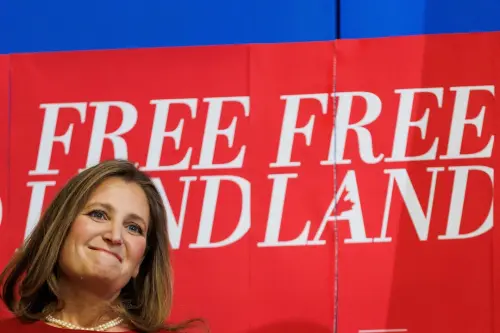Canada's Liberal Party is in the process of selecting a new leader to succeed Prime Minister Justin Trudeau, who announced his resignation in January due to increasing dissatisfaction with his performance. The election results are scheduled to be announced on March 9.
In contrast to countries like Australia and Britain, where prime ministers are appointed by lawmakers and can be swiftly removed, Canada's political party leaders are chosen through special contests by their members. Trudeau's resignation automatically initiated a leadership race, with the winner of the Liberal Party leadership becoming the new prime minister.
Current polls indicate that the former central bank governor holds a significant advantage over former finance minister Chrystia Freeland, whose actions in December led to Trudeau's resignation. While former cabinet minister Karina Gould is also in the running, her chances are slim.
Any individual registered as a Liberal can participate in the voting process without any membership fees. Both Canadians and permanent residents are eligible to join the party. As of January 30, approximately 400,000 people had signed up to vote, in a country with a population of around 41 million.
The selection process involves a ranked ballot system within each of the 343 parliamentary constituencies known as ridings. Each riding is assigned 100 points, distributed based on the proportion of votes received by each candidate per riding.
The process emphasizes nationwide support for a candidate rather than sheer volume of backers. Voters rank the candidates in order of preference, with points allocated accordingly. If no candidate secures more than 50% of the total points initially, the lowest-scoring candidate is eliminated, and their votes are redistributed based on voters' next preferences.
This approach continues until one candidate surpasses the 50% threshold. The Liberal Party plans to announce the election outcome in Ottawa on March 9, without disclosing further details.
According to Canada's fixed-election law, the upcoming national election must occur by October 20, but could potentially happen earlier. The new Prime Minister could call for an election post-March 9. Additionally, a vote of no confidence expected in late March could trigger an earlier election. Despite the Conservatives led by Pierre Poilievre currently leading in most surveys, the gap with the Liberals has narrowed since Trudeau's resignation and amid threats of tariffs from U.S. President Donald Trump on Canadian imports.
